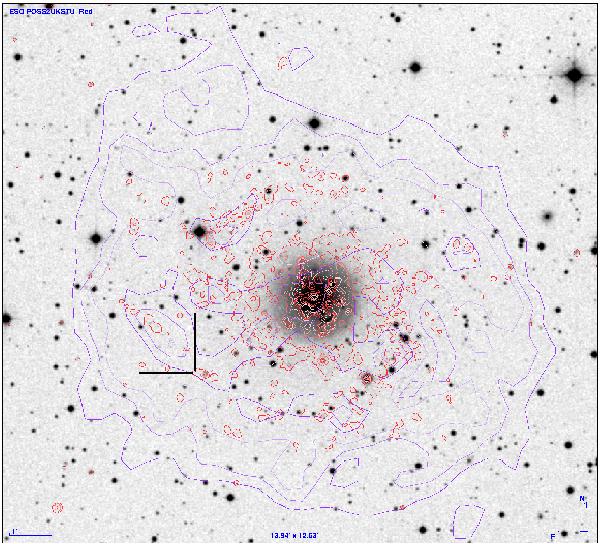Fig. 2

DSS B-band image of NGC 1058 with GALEX FUV contours (red) and WHISP (van der Hulst et al. 2001) H I contours (purple) overlaid. As one can easily see, the ultraviolet disk as well as the H I disk of NGC 1058 are both much more (~3 times for the FUV and ~5 times for the H I disk) extended than the optically visible disk. Given the fact that SN 1969L is located well within this FUV disk (position marked with two ticks), the most likely assumption would be that its progenitor is not a HVS but a massive product of the ongoing star formation which is traced by the FUV emission at this locus.
Current usage metrics show cumulative count of Article Views (full-text article views including HTML views, PDF and ePub downloads, according to the available data) and Abstracts Views on Vision4Press platform.
Data correspond to usage on the plateform after 2015. The current usage metrics is available 48-96 hours after online publication and is updated daily on week days.
Initial download of the metrics may take a while.


